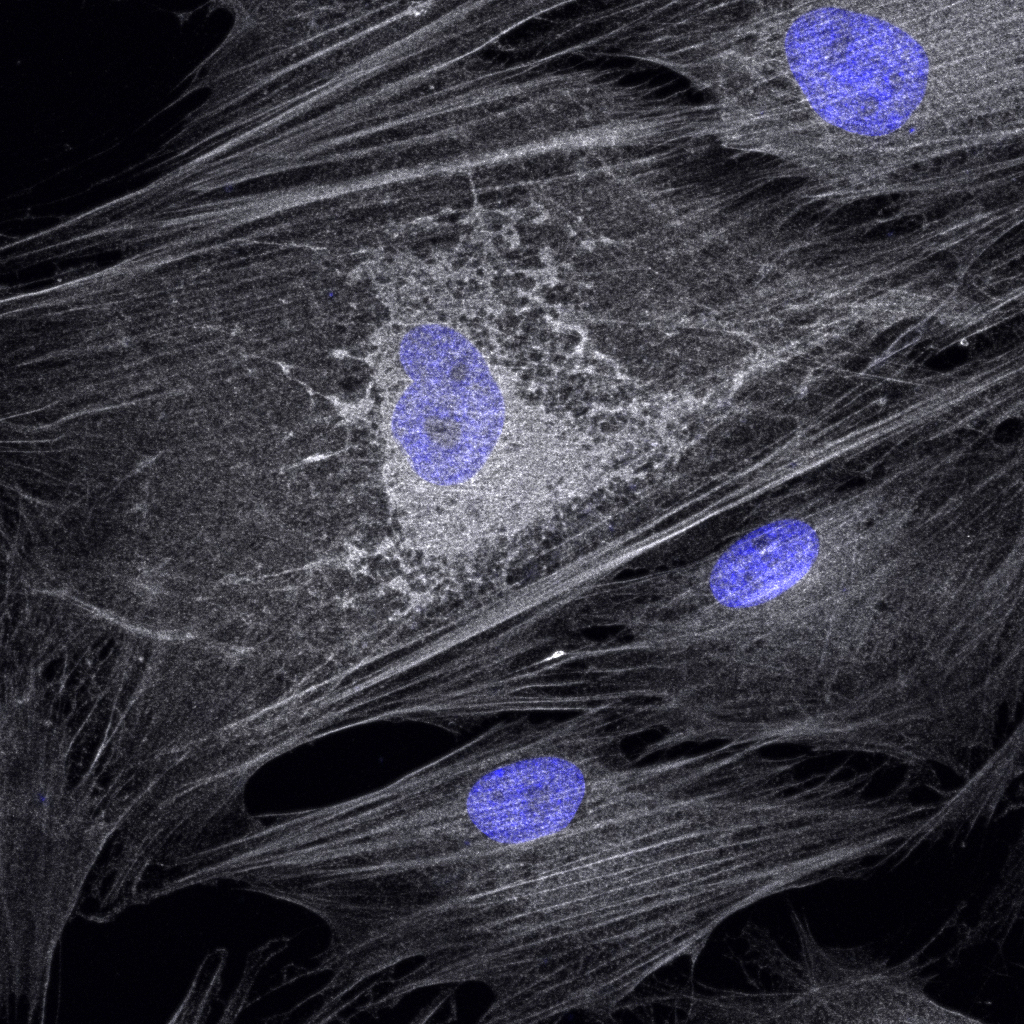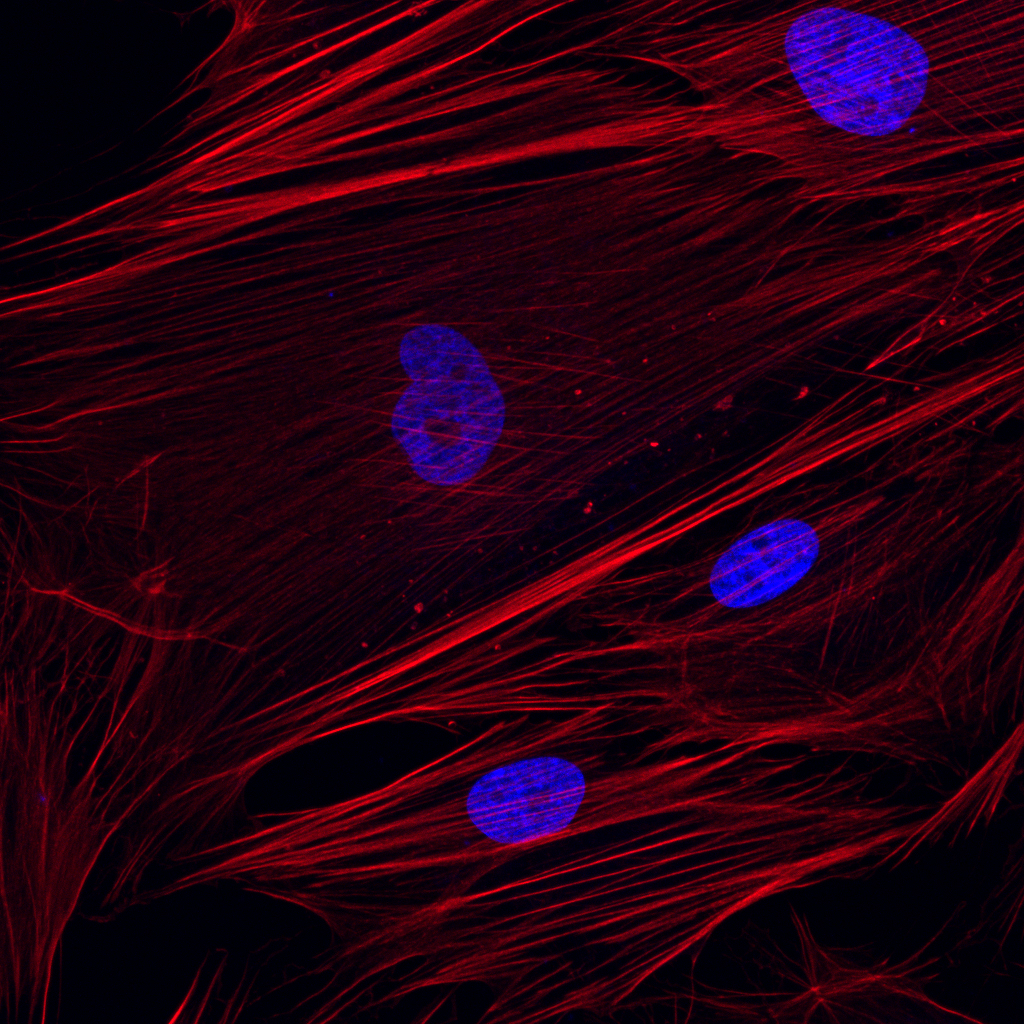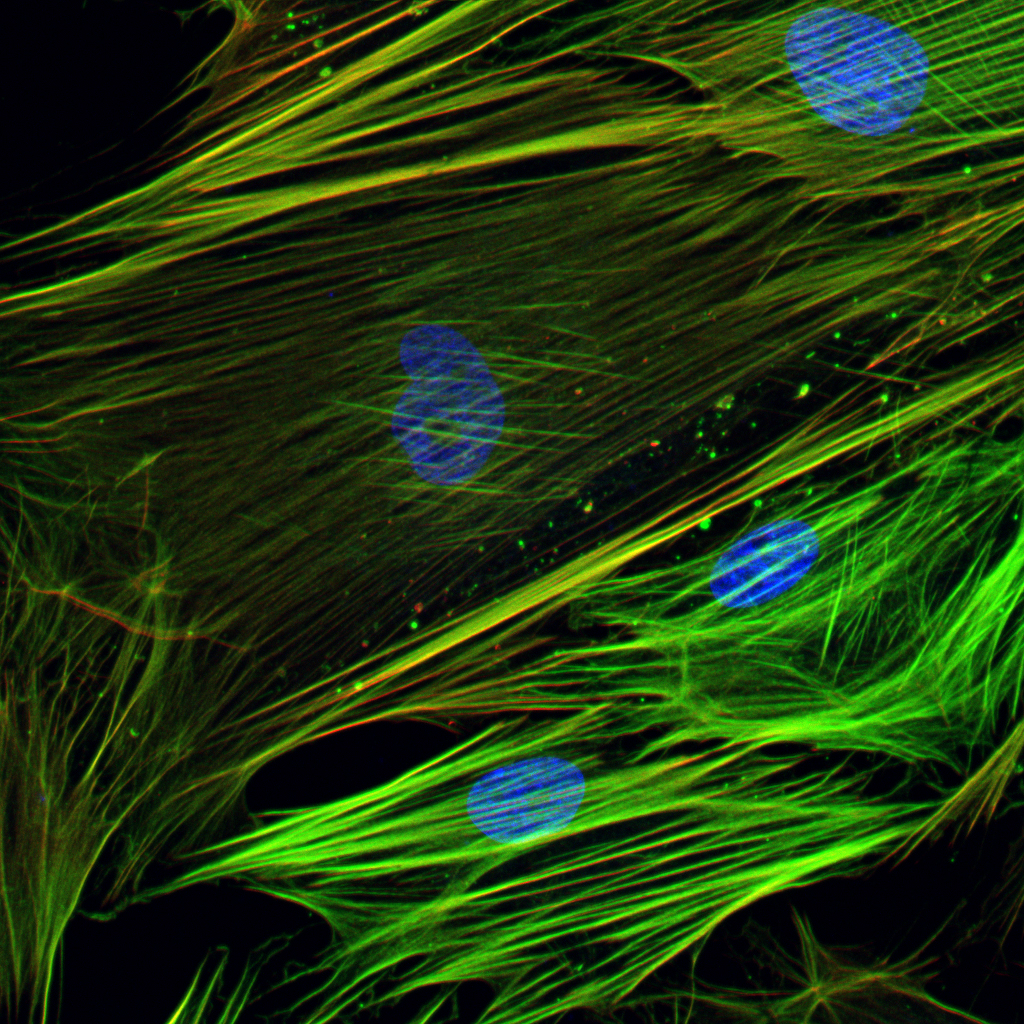Our state-of-the-art laboratory is equipped with everything we need to turn revolutionary ideas into reality.
Our state-of-the-art laboratory is equipped with everything we need to turn revolutionary ideas into reality.

Custom-designed peptides power our proprietary
nanomedicines.

We unlock the cellular pathways that drive regeneration.

We visualize how our therapies interact with cells at the molecular level.
Thanks to our partnership with the University of Florida, we access world-class facilities to optimize and characterize our nanocarriers for strength, stability, and performance.
Primary open-angle glaucoma (POAG) is a common, chronic eye condition where the drainage angle between the cornea and iris remains open, but fluid outflow is impaired.
This leads to elevated intraocular pressure, gradually damaging the optic nerve and causing vision loss, often starting with peripheral vision.
Trabecular meshwork (TM) cells are key to regulating aqueous humor drainage from the eye. In open-angle glaucoma, these cells become dysfunctional or reduced in number, leading to increased resistance to outflow and contributing to the rise in IOP. NC134 targets NTSR1 receptors in TM cells to activate actin cytoskeleton dynamics and energy boosting mechanisms.
Major Depressive Disorder (MDD) is a common and serious mental health condition
characterized by persistent low mood, loss of interest or pleasure, fatigue, sleep disturbances, and
cognitive impairments. It involves dysregulation of neurotransmitters like serotonin, dopamine,
and norepinephrine, as well as alterations in stress response and neuroplasticity.
SST2 receptors (somatostatin receptor subtype 2) are G protein-coupled receptors that bind Somatostatin, a neuropeptide involved in modulating neurotransmission, hormone secretion, and inflammation. In MDD, SST2 receptor expression is often reduced, particularly in brain regions
like the prefrontal cortex, suggesting a role in mood regulation and emotional processing. This reduction may contribute to cognitive and affective symptoms of depression. NCMDD targets SST2 receptors, thus increasing Somatostatin neuropeptide production, and additionally boosting bioenergetics and neuroplasticity via an intranasal formulation.
Temporal lobe epilepsy (TLE) is a common form of focal epilepsy originating in the temporal lobe, often involving the hippocampus. It is characterized by recurrent, unprovoked seizures that
may cause altered consciousness, automatisms (repetitive movements), and memory or emotional disturbances.
SST2 receptors are found in inhibitory interneurons and help regulate neuronal excitability. In
TLE, SST2 receptor expression is often reduced, contributing to impaired inhibitory signaling and increased neuronal hyperexcitability, which can facilitate seizure activity. Restoring SST2 function is being explored as a potential anticonvulsant strategy via an intranasal formulation of
NCTLE that targets SST2 receptors and additionally delivers Somatostatin neuropeptides into target cells.
NanoNeurosciences, Inc.
UF Innovate at Sid Martin Biotech, 12085 Research Dr., Lab 130, Alachua, FL 32615, USA
Copyright © 2025 by NanoNeurosciences, Inc.